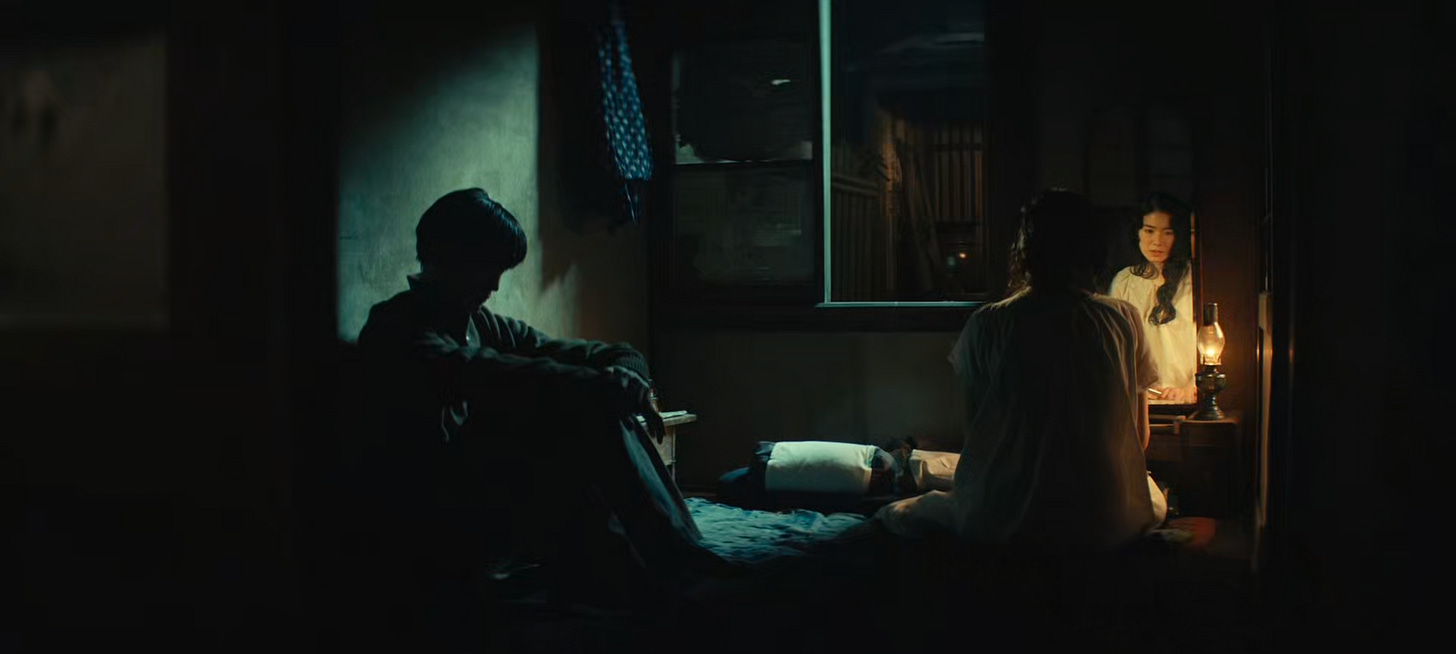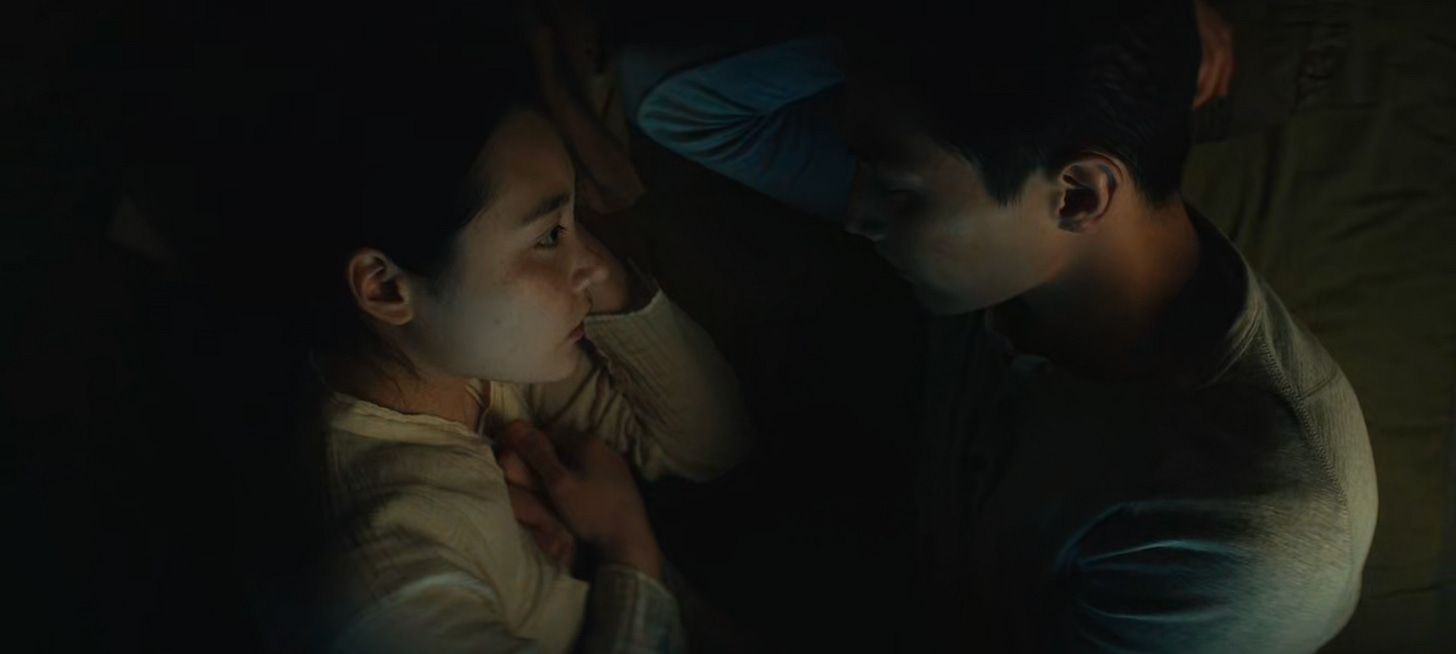Series Roundup: PACHINKO
We talked about the theory and making of its gorgeous title sequence; now in honour of Pachinko’s Season 2 premiere, here are some of our favourite Season 1 shots.
“Chapter One” - Colour
Pachinko’s opening scenes intercut between two different countries, times, and groups of people; though they contain disparate elements, the use of colour (particularly in set dressing and wardrobe) ties the stories and timelines together.


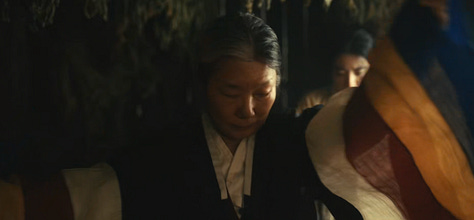

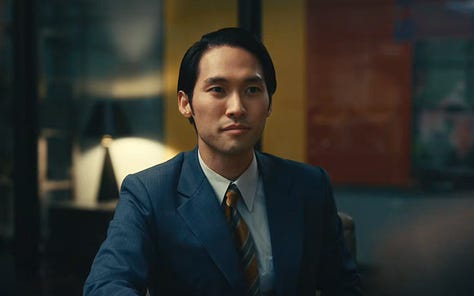

“Chapter Three” - Confrontation”
This scene opens with the red behind Koh reflecting on Sunja’s face; that effect grows as the scene progresses and Sunja is both more threatened and more angry.


For much of the scene Koh (always frame left) is in wides and mediums, Sunja (always frame right) in closeups: he's distant, attempting to control; she's trapped, and we're more ‘with’ her, feeling her emotions.
When Koh comes to crowd, touch, and attempt to control Sunja, the camera stays on her, first framing his face out, then keeping him obscured in shadow. Meanwhile Sunja's face is fully washed in red, the darkest it's been all scene.
The blue behind Sunja signals her freedom is away from Koh, and finally Sunja exits into that blue light, leaving Koh alone in his red anger.

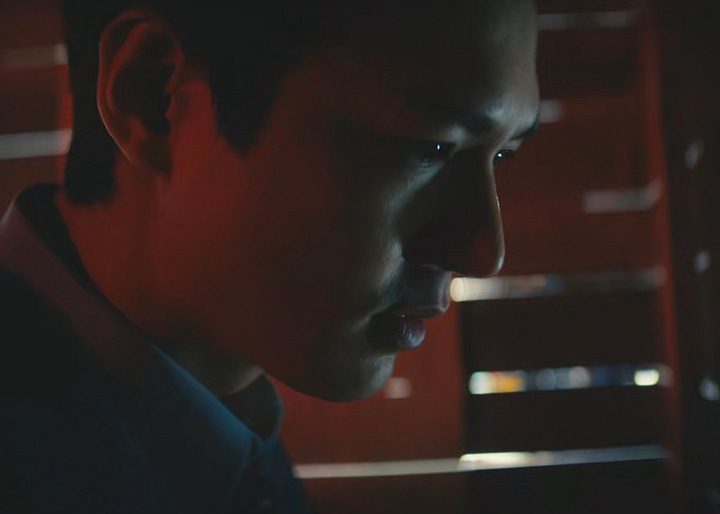
“Chapter Five” - Couples
This episode uses a variety of two-shots in scenes of two characters ‘just’ talking. Three different techniques are used not only for the scenes to look different, but to underline characters’ different motivations and feelings in each scene.
1. Temporary Disconnect
The shots in this scene make clear Yoseb and Kyunghee are at odds. They're lit in distinctly different colours, even in the same frame. Their singles are 'clean,' each alone in frame. When sharing a frame, they make (or avoid) eye contact via mirror.


2. Growing Connection
Sunja and Isak’s scene is about coming closer together. They’re shot in intimate close-close-ups, shots focusing on one character always have the other in frame.
Sunja turns more towards Isak as the scene goes, until they squarely face each other.



3. Fluctuating Trust
Naomi and Solomon are guarded during their first 'real' discussion. Shot entirely from behind / over each others' shoulders ('French over') the shot size keeps changing, and sometimes they're in each others's shots, sometimes they drift in and out.


Takeaway
How the lens views them shapes how we see them seeing each other — shots all serving how these characters are relating to each other.
“Chapter Six” - Distance
Father and son never share frame as Baek tells Solomon he's being sent to America.
The scene starts on a closeup of Baek, but gradually pulls away from him; the slow double pull-away signifies 1. Solomon is traveling 2. emotional distance between them is growing.
The scene ends in a closeup on Solomon, putting us inside his feelings (similar to how the scene from “Chapter Three” used closeups to help us identify with Sunja).
“Chapter Six” - Emotion
The movements and colours shifting between these scenes depict Solomon's feelings.
When Solomon enters the office, shots are crowded and full of warm yellow light: yes he's being fired, and had a bad experience, but he *wants* it to be home.
There’s a sharp cut to his exit into grays-and-blues, a scene of cement, skyscrapers, and medium shots, with his face reflected unclear in the fountain. Solomon sees the outside world as cold and hard, and is unsure where he goes from here.
We look forward to talking about more shots and scenes from Season 2 as it airs!
You can always follow us on various socials or comment here with your favourites, including submissions and requests.



